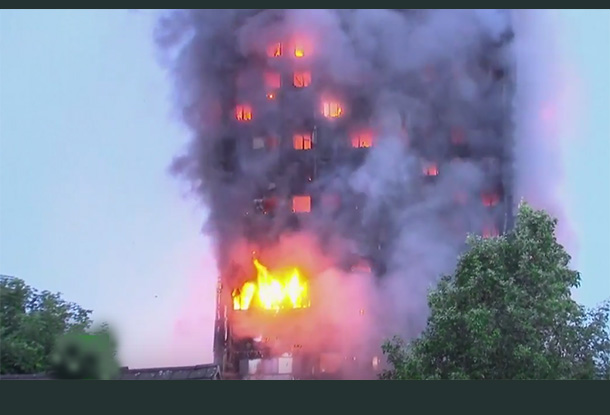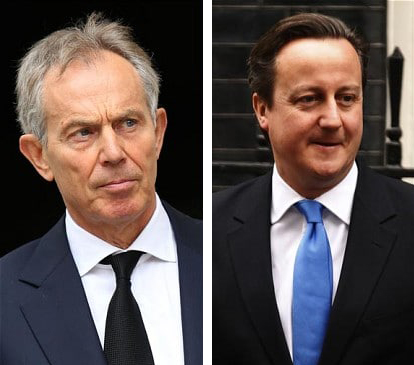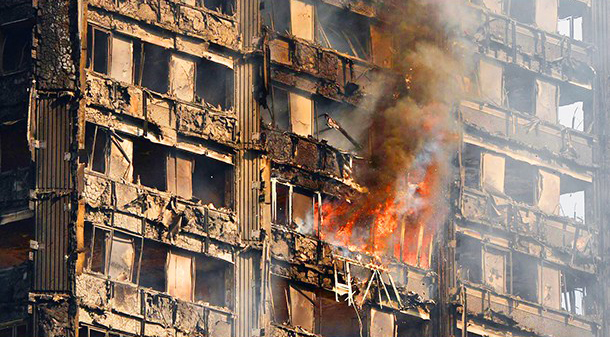 Daniel Margrain
Daniel Margrain
Culture and Politics.org
Back in January, 2016, former Tory Prime Minister, David Cameron announced in the media his intention to demolish some of England’s worst council estates and “rebuild houses people feel they can have a future in”.
The key motivating factor that underlined Cameron’s decision was not a genuine desire to improve the quality of life for ordinary people, but to help sustain the fractional reserve banking racket and to perpetuate asset bubbles.
Housing and Planning Bill
Cameron’s announcement was made two days in advance of the Commons vote on the Housing and Planning Bill. The bill, which became law last May, compels local authorities to sell ‘high value’ housing, either by transferring public housing into private hands or giving the land it sits on to property developers. In other words, what is driving the government’s housing policy is not to bring to an end the housing crisis, but rather to bolster the investment opportunities of the rich. MPs also have a stake. This will make a bad situation worse.
The 126 MPs who have declared they receive rental income from property, represent over 19 per cent of the House of Commons, the vast majority of whom are Conservatives. All 72 Tory MPs who voted against a Labour amendment to the bill which would have required private landlords to make their homes “fit for human habitation” are themselves landlords.
Clearly fire hazards within homes render such homes unfit for human habitation. The voting through of the bill into law, which clearly represents a major conflict of interest, have led to soaring rents meaning that ordinary people have found it increasingly difficult to afford to live in the capital city. As the statement on a flyer that promoted a protest against the bill argued:
“It [the bill] takes public funding away from affordable homes for rent and does nothing to improve security or control rents for private renters.
“This is turning back the clock, taking away security and pushing up rents. It would force the selloff of council homes on the open market, to pay for housing association ‘right to buy 2’. Councils and housing associations will not be able to build replacement homes for rent.”
In short, the bill forces local authorities to sell off council housing. The proceeds are then used to encourage housing associations to extend Right to Buy. The bill has also accelerated the extent to which housing associations behave like private companies. This kind of privatization agenda isn’t the case in countries such as Holland or Germany where government investment in social housing for rent is the norm.
Sell-offs
According to the Department for Communities and Local Government annual report into social housing selloffs, of the 21,992 dwellings sold in the year to 2016 in the UK, 12,557 were sold by local authorities and 9,435 by housing associations. The local authorities figure is a 1 per cent increase on the previous year. The housing association figure represents an 18 per cent rise. Government funds for housing associations are drying up. In order to make money, these associations are effectively forced to sell their properties to the private sector. The profits gained are then reinvested into their businesses reducing the overall availability of affordable housing stock.
Mass council house building is the most effective way to house people but this undermines the profits of private firms. One way they do this is by holding onto land rather than developing it, so that prices are pushed upwards. As prices within the private rental market soar, more firms are trying to get their hands on the profits generated.
According to research from Paragon PLC, the private rented sector (PRS) “is the second largest housing tenure, accounting for one-in-five homes in England alone, overtaking the social rented sector for the first time since the 1960s. This represents a significant increase in the number of households living in private rented homes.” The report added, the PRS has “more than doubled since 2001 and is now the second largest housing tenure…PRS is now home to 4.9 million households.”
Tory fractional reserve banking has resulted in the rise of private rented homes and created asset bubbles. This is illustrated by the exponential growth in the construction of new tower blocks throughout London and other major cities. These are not intended for local residents to live in, rather they are being built for foreign investment funds and billionaires to buy as financial safe havens.
However, investment opportunities of the rich are undermined following any attempts by the government to increase supply which also adversely affect the property investment portfolios of politicians. It’s in the joint interests of MPs and major property developers who lobby on their behalf to continue to deregulate the housing market and to loosen planning controls.
The combination of lax planning, greater deregulation and the lack of availability of affordable housing, is two-fold. First, it results in the social cleansing of the poor and those on middle incomes from major cities. In terms of London, for example, the graph below shows the number of families with children who have been moved out of the capital each year since 2010/11 (Thanks to Dan Hancox):

Secondly, the combination of factors described alters the dynamic of urban space whose reconfiguration not only changes the demographic, cultural and ethnic mix of spaces, but also undermines social networks and local economies upon which local businesses depend for their livelihoods.
Hollowing-out
More broadly, the hollowing out of large parts of cities alters perceptions of what constitutes private and public spaces and for what use the state intends to put them to. Last year, the Guardian reported on a London rally that protested against the corporate takeover of public streets and squares. Protesters cited London’s Canary Wharf, Olympic Park and the Broadgate development in the City as public places now governed by the rules of the corporations that own them.
The issues underpinning the protests relate to how neoliberalism is re-redefining many urban spaces as cultural centres of production. This is leading not to diversification and aesthetic pleasure, but instead to a uniformity of corporate culture. These kinds of privatized public zones are increasingly a feature of modern Britain. Examples include Birmingham’s Brindley place, a significant canal-side development, and Princesshay in Exeter, described as a “shopping destination featuring over 60 shops set in a series of interconnecting open streets and squares”.
Intrinsic to the privatization agenda is the Public Space Protection Order (PSPO). Introduced by the Tory-Lib Dem coalition government, the PSPO is another form of social cleansing that is intended to criminalize those sleeping rough and to drive them from towns and city centres.
In other words, the formal ordering and disciplining of the poorest within urban spaces has had the affect of pushing them to the periphery, out of sight and out of mind of urban powers for whom responsibility is increasingly disavowed. In this way, urban spaces are shaped by economic forces which seem beyond the control of ordinary people, that alter the landscapes of cities and communities and re-package them under the banner ‘urban renaissance’, ‘regeneration’ and ‘gentrification’.

IMAGE: Blair and Cameron: different parties, same agenda.
Contradictions
Begun under New Labour, the neoliberal ideology that underpins these shifting landscapes, reflects a historical contradiction between planning in terms of social need and the process of competitive accumulation – a contradiction that can be traced back to the 1947 Town and Planning Act. Although urban planners have often been cast in an heroic role protecting the public from shoddy contractors and the short-term drive for profit by speculators, town planning has been skewed historically by deeply undemocratic practices.
Having been granted wide-ranging powers as a result of the Town and Planning Act, that include the approval of planning proposals, local authorities are able to carry out redevelopment of land themselves, or use compulsory purchase orders to buy land and lease it to private developers. With the authorities playing lip-service to objections to the way communities are prioritized to corporate interests, public voices are being drowned out and the bureaucracy of the state seemingly ever more remote from the issues and concerns that affect the daily lives of ordinary people.
It’s precisely the contradictions and the lack of a culture of democratic accountability described, that culminated in the Grenfell Tower fire which has brought the UK housing crisis under intense scrutiny. As journalist James Wright put it:
“Successive Conservative-led governments have created artificial housing scarcity that further enriches property owners. Starving the supply of genuinely affordable accommodation inflates house prices and rents. Such a housing strategy, coupled with a deregulatory agenda, is forcing more and more ordinary people into dangerous and uncomfortable conditions.”
In what is one of the most economically unequal and ethnically diverse neighbourhoods in arguably the most expensive real estate locations in the world, local resident, singer and activist, Lily Allen described how the local council are driving communities apart. “People are encouraged not to congregate and discuss what is happening in the area. They are not encouraged to have a community spirit”, she said.
Allen argued there could well be a reckoning in the pipeline for a Conservative deregulatory agenda that appears to trample over the safety of working class residents. In addition, the singer claimed the death toll is being “micro-managed” by the government and the media for political purposes. At the time of writing (June 19, 2017), mainstream media reports have stated that 58 people are believed to have died. However, the real figure is likely to be closer to 500.
The notion that the mainstream media are underplaying the seriousness of the disaster is borne out by two local residents on the ground who agreed “the media including the BBC are lying. What you are seeing here [on the ground] and what you are seeing on the news are two different stories”, they claimed.
The systemic and structural issues outlined, underscored by a complicit corporate media, is what led Labour MP David Lammy to contend the fire in north Kensington was akin to “corporate manslaughter”. Academic and activist, Rob Hoveman, was explicit in naming and shaming four individuals who, as a minimum, he regards are worthy of being charged with the offence. These are:
- Councillor Nick Paget-Brown, Conservative leader of the Royal Borough of Kensington and Chelsea.
- Nicholas Holgate, Chief Executive of RBKC. (Anyone who knows anything about local government will know the Chief Executive is an immensely powerful usually extremely well-paid employee of the council who works hand-in-glove with the leader).
- Robert Black, Chief Executive of the Kensington and Chelsea Tenant Management Organisation.
- Councillor Rock Feilding-Mellen who is both Deputy Leader of RBKC and “has the specific responsibility for promoting better housing for borough residents…and regeneration initiatives”.
The alleged crime scene, in which the UK government under Theresa May is also potentially complicit, must be viewed within a context in which, according to the Equality Trust, the UK’s richest 100 families have increased their wealth by £55.5bn since 2010 while average incomes have risen by £4/week. The Office for National Statistics point out that the UK’s richest 10% of households own 45% of total wealth – 5.2 times greater than the bottom 50% of households.
This level of austerity and inequality is reflected in government cuts to front line emergency services which have come under intense scrutiny since the fire. Tory cuts in London resulted in ten fire stations closing, three of which were in the area of Grenfell Tower. In the UK as a whole, 10,000 firefighters – one in six – have been cut since the Conservatives came to power in 2010. The Conservative-Liberal Democrat Coalition cut fire and rescue funding by 30 per cent. Furthermore, as a consequence of the reduction in staffing levels, safety checks in tower blocks have been cut by a quarter.

.
Grenfell Action Ignored
In the months and years leading up to the fire, a residents’ organisation, Grenfell Action Group (GAG), expressed major health and safety concerns in relation to the Grenfell Tower which included out of date fire extinguishers and inadequate fire fighting equipment.
The group also accused Kensington and Chelsea Council of ignoring health and safety laws. In January 2016, GAG warned that people might be trapped in the building if a fire broke out, pointing out that it had only one entrance and exit. GAG frequently cited other fires in tower blocks when it warned of the hazards at Grenfell.
The undemocratic and contradictory forces that prioritize profit before people, were further highlighted after GAG alerted the Royal Borough of Kensington and Chelsea (RBKC) Cabinet Member for Housing and Property about their numerous concerns. They even warned them that a catastrophic fire was likely to break out in the block. Not only did GAG not receive any replies to the concerns raised, but the group alleged Kensington and Chelsea Council harassed them and threatened GAGs blogger with legal action. But because of Tory cuts to legal aid, the group couldn’t afford lawyers to defend themselves.
The Grenfell tragedy is a salutary reminder of how neoliberal ideology, the politics of austerity and corporate corruption that lie at its root, are interwoven within the fabric of the British state. More than ever, the country desperately needs a Corbyn-led government in order to begin to turn things around.
Yesterday London’s Metropolitan Police released the following images of a burned-out floor in Grenfell Tower:
.
.
Author Daniel Margrain is political analyst and writer is a graduate of Goldsmiths, University of London. This article originally appeared on his blog Culture and Politics.org – the view from the dark side: politics, media, cities & culture.
READ MORE GRENFELL TOWER NEWS AT: 21st Century Wire Grenfell Files
SUPPORT 21WIRE – SUBSCRIBE & BECOME A MEMBER @21WIRE.TV















